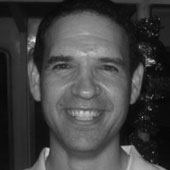
Cupping (Ba Huo Guan) is a traditional Chinese medicine technique whereby suction or a drawing action (ba) is created over an area of the body by using fire (Huo) and a special type of cups or jars.
You will learn how to apply cupping to musculoskeletal related problems. The Melbourne Institiute of Massage Therapy and Myotherapy offers the opportunity to introduce this technique as an adjunct to your remedial massage skills.
You will learn the underlying tradition Chinese medicine philosophy as well as the western perspective on how cupping works.
In order to assist you, as remedial massage therapists, in integrating cupping successfully into your practice we will explore the:
- Actions of cupping from a TCM and western perspective
- Indication of cupping
- Cautions and contrainidcations for cupping
- Methods of cupping
- Formulation of a cupping treatment plan
- Integration of cupping with massage by using case history examples
The prerequisite for this course is a Certificate IV of Massage Therapy
Start your remedial cupping course with MIMT
Trainers For This Course

George Dellas
George has developed a truly holistic approach through his unique ability of integrating the wisdom of TCM with the principles of Naturopathy and Remedial Massage.
Next Course date:
Please call 1300 839 839 for available dates.
What Students Have Said
“George creates a great learning environment. Another fantastic method to use in the clinic. ”
G. Smith, Boronia
FAQS
Cupping is an ancient and alternative form of medicine where a massage therapist places cups on the skin for a few minutes, causing the skin and muscle to be pulled into the cup.
These cups are often made from glass or silicone.
Cupping therapy can be used to reduce pain and inflammation and can be used in deep tissue massage. With the Melbourne Institute of Massage & Myotherapy, you will learn how to use cupping to treat musculoskeletal problems and how this comes into the practice of remedial massage. You will also learn some traditional Chinese medicine philosophies and western perspectives on the benefits of cupping.
Throughout the course, we will review:
- Actions of cupping from a TCM and western perspective
- Indication of cupping
- Cautions and contraindications for cupping
- Methods of cupping
- Formulation of a cupping treatment plan
- Integration of cupping with massage by using case history examples
Note: a Certificate IV of Massage Therapy is a prerequisite for this course.
Cupping is not essential for massage therapists, myotherapists, and physiotherapists. However, it is still a beneficial skill to have – cupping is becoming more and more popular to treat musculoskeletal pain!
Before offering cupping therapy to your clientele, we recommend taking our nationally recognised cupping course and learning the essential skills to complete cupping safely and effectively.
Cupping courses are conducted face to face at our Heidelberg Campus.
Our cupping therapy courses are around 18 hours long. It is considered one of our short courses and an extension of our diploma and certificate courses.
Not necessarily. Some physiotherapists with knowledge around traditional Chinese medicine offer cupping to promote blood circulation by lifting the connective tissue, loosening adhesions, and restoring blood flow to areas of the body that have been restricted. This can be good for deep tissue repair.
However, not all physiotherapists find cupping helpful and the negative side effects (for example bruising and cupping marks) can sometimes outweigh the good.
Overall, we recommend taking a cupping course just to be safe – you never know where you’ll end up working, or if clients will request this unique form of massage therapy.
Cupping is becoming more and more popular for relaxation, wellbeing, and stress relief. While it is not essential to have cupping experience to become a massage therapist, we recommend taking a cupping course if you plan to offer cupping as a service.
Only students studying a Diploma of Remedial Massage at the Melbourne Institute of Massage & Myotherapy can apply for VET student loans. However, we have a wide range of student loan options to choose from.
For more information on our student loans, please get in touch with the course advisor.
At the Melbourne Institute of Massage & Myotherapy, you will receive both practical and theoretical experience. You will learn about traditional Chinese medicine philosophies and western perspectives on the effectiveness of cupping.
You will also get some hands on experience in our student massage clinic on campus. This will help ensure you know how to safely and effectively offer cupping to future clients and patients.
You will not be required to do work experience for this course.
Want to expand your skills even further? Taken an interest in traditional Chinese medicine and their philosophies? You might consider taking our interactive dry needling postgraduate course. Similar to the practice of acupuncture, dry needling involves inserting thin needles into the muscle to relieve stress, pain, and tension.

